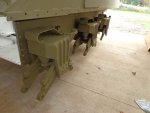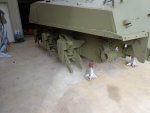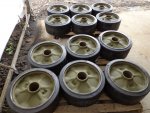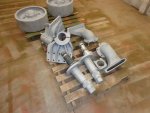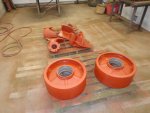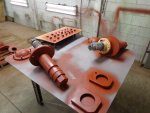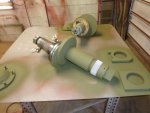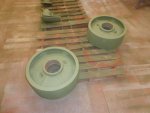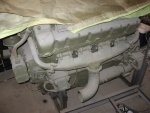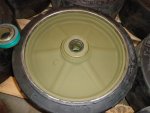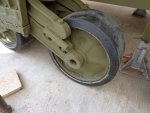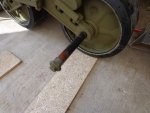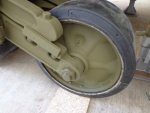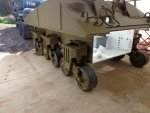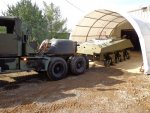Until
DoctorCheney223's 'identify my Sherman' thread, I hadn't ever seen photos of a Sherman hull without anything in it. My only exposure to battle tanks in any detailed way until then was an M1 Abrams MBT I crawled over back in the '90s.
It has been fascinating to compare the complex and compartmentalized structure of the Abrams to the Sherman restoration photos here. A Sherman lower hull is basically a box made of armor plate with stuff (bogies, idlers, the transmission) bolted/welded to it or (the engine, ammo racks, seats, etc) bolted inside it. It's almost like I handed my son a shoe box and an X-acto knife and said, 'make me a model tank from this, and just glue the tracks and stuff on the outside'
No multilayer armor (look at the top three decks of a WWII battleship for comparison), no compartmentalization. Just stuff everything you need in the box in a way that works and go to war. There's a sort of brutish elegance about it. Structural engineering is a non-issue - armor plate is plenty strong. The armor plating the hull is built from is also the chassis - it's a true monocoque design, but instead of being optimized for light weight like an airplane or race car it's optimized for total armor coverage.
And then there are the experiments. You know that a design is a success when people (both in the field and at the proving ground) start tweaking it, instead of just trying to replace it wholesale. Duplex drive, several different main guns, flamethrowers, rocket launchers, pistol ports/no pistol ports, different track sizes, four completely different engines, even doubling the armor (the Jumbo), which should have broken the suspension and overloaded the drivetrain, but didn't. The only other allied WWII machines I can think of that got so many variations and tweaks on such a fundamental level were the B-25 and (to a lesser degree) the B-17.
And then you compare the artisanal nature of Germany's tank-building during WWII. Five perfect tanks welded up by artists or 500 'good enough' Shermans welded and cast by the dozen on assembly lines in truck and locomotive factories. And, for the record, the later German tanks often had big problems (see Porsche Tiger) that didn't make them all that perfect. Maybe the first 50 Shermans in a subtype did, too. So weld a scab armor patch on the upper hull over the ammo racks, send it off to war, and get on with building the next one.
